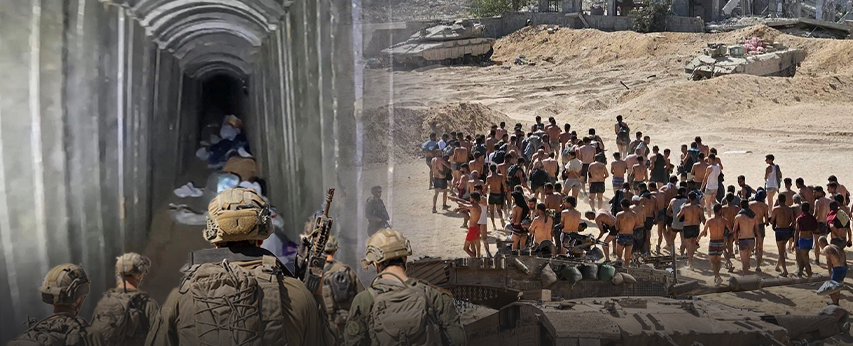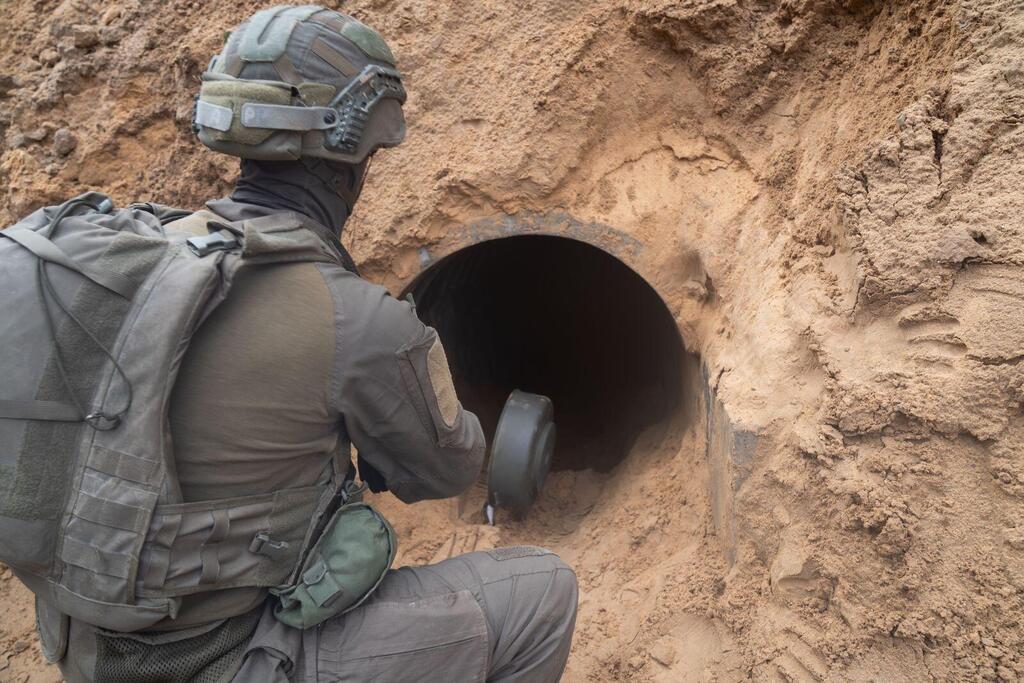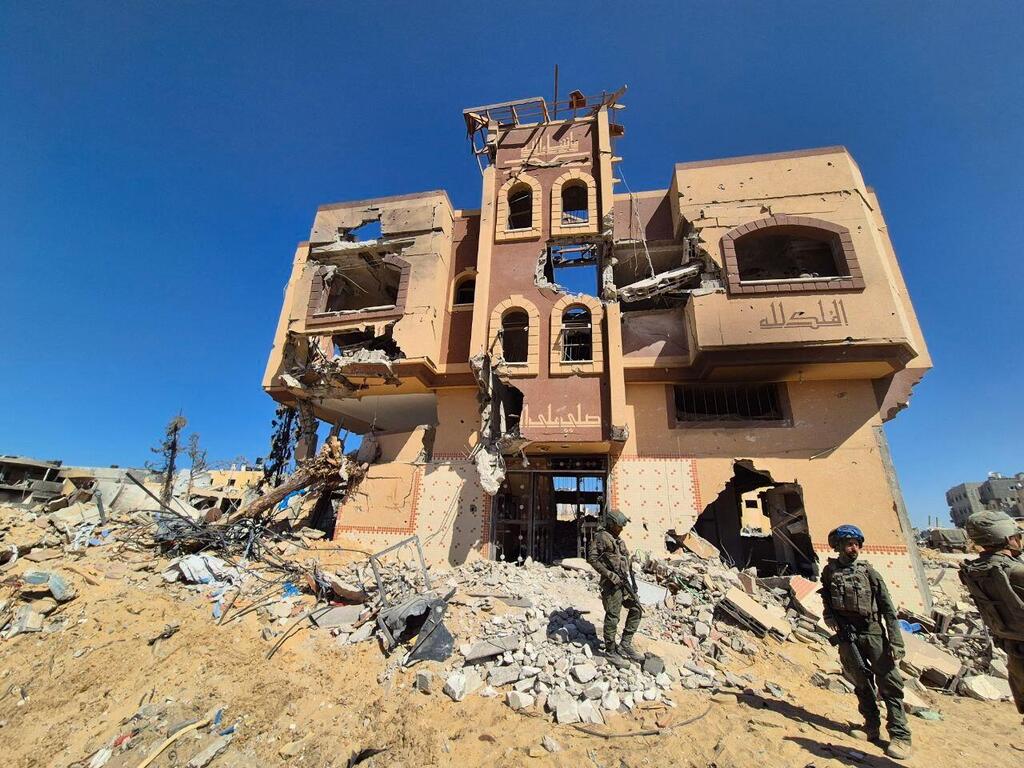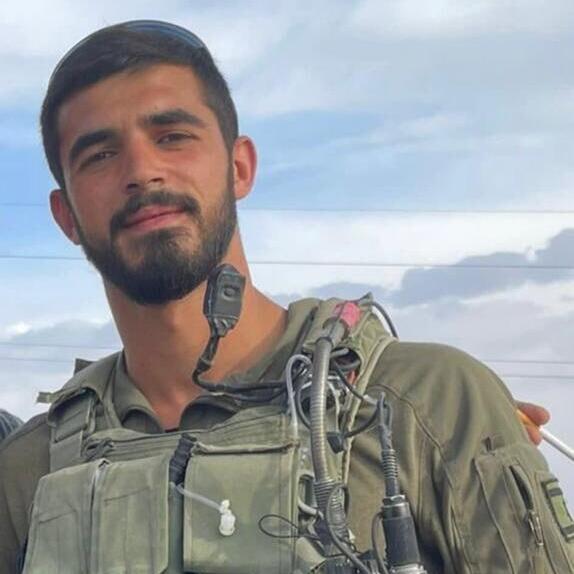Getting your Trinity Audio player ready...
Hamas’ deadly surprise attack, which catalyzed the now more-than-year-long war, proved that the perennial Gaza problem won’t resolve itself. In a single strike, the terrorist organization shattered the previous notion that maintaining its rule in Gaza, along with cash infusions into the Palestinian enclave, could serve as a sufficient deterrent or smokescreen.
Hamas terrorists brutally attacked Israeli territory in what many see as one of Israel’s worst security, political and intelligence failures.
Yet, even more than a year after the massacre, the Security Cabinet has not defined a strategic policy for Gaza’s future. Questions remain unresolved about what should take shape "the day after"—whether weakened Hamas control, Palestinian Authority governance, moderate Arab states’ involvement or even Jewish settlement—all possibilities that have yet to be formally decided.
The focus has largely shifted to distant fronts in Lebanon and Iran, leaving Gaza’s fate uncertain. Nonetheless, there is consensus on one point: the IDF must maintain operational freedom in Gaza to prevent the rebuilding of terrorist organizations’ power, a priority that contrasts starkly with the approach before October 7. This is the situation on the one-year anniversary of the ground offensive in Gaza.
Fighting in circles
On October 7, faced with an unprecedented assault, Israel saw no alternative but to initiate a full-scale war with two core objectives: dismantling Hamas' military and governance capabilities and securing the return of hostages taken during the attack.
In response, the Israeli Air Force launched extensive airstrikes across Gaza, which began after several hours when forces were unable to counter the onslaught effectively. Meanwhile, hundreds of thousands of reservists reported for duty, with an unprecedented mobilization rate, preparing for action across multiple fronts.
This marked the initial phase of operations in Gaza, during which a ground offensive was delayed for nearly three weeks as plans were finalized and political leaders evaluated potential consequences.
First IDF ground forces entering Gaza, October 2023
(Video: IDF)
After initial hesitations, Israel entered Gaza on October 27, aiming to exert military pressure on Hamas to secure the hostages' release and ultimately weaken the organization’s grip on Gaza. However, it soon became clear that achieving the second objective could drag on indefinitely.
Following a brief month of ground operations, fighting paused for a week-long hostage exchange during which Hamas released 80 women and children. Israel resumed its offensive thereafter, pushing into Khan Younis and later, under renewed diplomatic pressures, advancing into Rafah as well. The guiding belief—"military pressure would coerce Hamas into a hostage deal"—proved ineffective.
Currently, though a formal cease-fire was not declared, combat operations in much of Gaza have concluded without Israel fully achieving its strategic goals. This final phase unfolded unevenly; by early 2024, Israel had ceased its ground offensive in 70% of Gaza's territory, and by August, 20% more—including Rafah—was similarly quiet. In the remaining areas, the presence of hostages led to a halt in direct military action, especially following the execution of six hostages in a Rafah tunnel.
The IDF is currently concentrated along the Philadelphi Corridor and in the surrounding neighborhoods, as well as along the Netzarim Corridor, which divides northern Gaza from the rest of the territory. From these key positions, forces conduct targeted raids, including those in Jabaliya and Beit Lahia.
The IDF has prepared extensively for this prolonged deployment, establishing outposts along the Netzarim Corridor and constructing operational roads in both Netzarim and the Philadelphi Corridor, where forces are able to navigate even with light, unarmored vehicles.
IDF officers note that fighting in Gaza has become cyclical. The buildings where soldiers are now engaging in Jabaliya and its refugee camp are the same areas where the 98th Division previously operated and cleared in May, and the 162nd Division did so again during the height of the ground offensive last November and December.
In these zones, Hamas has managed to reactivate some of its tunnels that were previously destroyed by the IDF and has rigged many areas with explosives, some of which are reportedly made from unexploded IDF munitions left on the battlefield in recent months. Effectively, Hamas has reestablished its presence within these zones, using the cover of the local population.
In Rafah, the IDF continues to target sites where Hamas is attempting to re-operate or where it still retains certain capabilities, especially underground assets. However, these operations are primarily localized, carried out at the battalion and brigade levels, and are focused on securing and maintaining control of the nearby Philadelphi Corridor.
As time passes, the IDF increasingly acknowledges that a full withdrawal from Gaza’s Philadelphi and Netzarim corridors, where Israeli forces maintain a continuous presence, remains unlikely in the near future. As a result, reserve brigades are being informed of continued deployment rotations in these areas through 2025.
"Hamas rule won’t collapse unless an alternative governance structure is established," military officials say. Meanwhile, the government has delayed settling on a clear long-term strategy, instead considering local solutions with uncertain effectiveness, such as distributing aid to Gaza residents through American contractors. This approach, say officials, effectively leaves Hamas in power, weakened but still present.
Without an official directive for a “post-Hamas” Gaza, the military cannot plan effectively beyond conducting limited, targeted operations.
The IDF has not operated across most of Gaza's territory for over six months. In large cities such as Khan Younis, signs of Hamas' resurgence are apparent, even more so than in northern Gaza.
Israel’s “maintenance tax” to the U.S. for humanitarian supplies—fuel, electricity and medicine—often ends up in the hands of Hamas or local militias, underscoring the instability in areas without Hamas' control. Ironically, some residents are reported to prefer the group’s return for the relative order it once imposed, as street safety has deteriorated in its absence.
As a military force, Hamas has sustained significant losses. Estimates indicate that 80-90% of its mid- to long-range rocket stockpile has been destroyed, and roughly 15,000-20,000 Hamas fighters have been killed or incapacitated out of an original 30,000, though some consider these figures high. Despite this, Hamas continues to recruit, while thousands of additional fighters come from other factions, such as Palestinian Islamic Jihad.
The IDF estimates that large portions of Hamas’ tunnel network remain, particularly as disconnected local structures rather than the integrated “metro network.” Many are located in areas where the IDF has refrained from operating in, such as central Gaza towns, due to fears that these sites may be holding hostages.
‘Force is not the answer to everything’
On October 7, Palestinian terror groups kidnapped 251 people, both alive and deceased; of these, 117 have been returned—most through negotiations—along with the bodies of 37. Yet, 97 remain captive, among them long-held detainees Hadar Goldin, Oron Shaul, Avera Mengistu and Hisham al-Sayed. Current estimates indicate roughly 50 captives remain alive, surviving in harsh conditions.
Talks for their release resumed on Sunday, with a summit in Qatar following prior attempts that failed over Hamas’ demand to end the war and Israel’s insistence on maintaining a military presence in Gaza. However, a new dilemma complicates this round: who holds decision-making power on the other side?
Following the death of Hamas leader Yahya Sinwar, high-ranking commanders remain in Gaza, including Rafah brigade commander Muhammad Shabana, northern Gaza’s Az al-Din al-Haddad, and Sinwar’s brother Muhammad.
Yet, some hostages are held by other groups, including Palestinian Islamic Jihad and rogue factions. Thus, while Sinwar’s elimination may have created new negotiating opportunities, it also presents new complexities.
“Not every objective can be achieved solely through military action,” Defense Minister Yoav Gallant emphasized in his address at the state memorial ceremony for war casualties at Mount Herzl, facing Prime Minister Benjamin Netanyahu.
“Force is not the answer to everything. To fulfill our moral duty—to bring the captives home—we may need to make painful compromises. We must do this for them, for their families, for the soldiers who fell for this cause, for the legacy of the IDF and for our Jewish and national ethos.
“This is our responsibility—my responsibility as defense minister, just as it was on the morning of October 7, throughout the entire year of war, encompassing both achievements and failures, the heavy costs, and the national challenges we are committed to addressing.”
In a letter to the Cabinet, Gallant noted that the war’s goals require a strategic shift.
6 View gallery


Prime Minister Benjamin Netanyahu and Defense Minister Yoav Gallant
(Photo: Defense Ministry)
A well-known point of contention is that the prime minister is unwilling to make the same concessions as the defense minister to secure the release of Israelis still held captive— a disagreement that nearly cost Gallant his position. In recent weeks, both sides have even discussed a “small deal,” a step that could pave the way for a broader agreement, one that many families continue to hope for.
Against this backdrop, Osnat Sharabi Matalon, whose brothers Yossi Sharabi and Eli Sharabi remain captive in Gaza, described the emotions felt by families amid renewed talks following prior dashed hopes. “We’ve learned not to hope,” she said.
“We’re always hopeful for negotiations and an agreement to bring back all the hostages, and we’ll keep rising each day with that hope in our hearts. But we’ve also learned not to listen to the noise around us. Until I see Eli, until I see the hostages in a Red Cross vehicle, I won’t believe it’s real.”
Osnat added that the last sign of life from her brother Eli arrived many months ago but explained that "it doesn’t mean much. He’s in a war zone. We’re very worried. The last six hostages were alive just moments before they were killed, so proof of life doesn’t tell us anything, even if there’s some tiny piece of information. Just bring them back.” Her brother Yossi has been confirmed to have been killed in captivity.
6 View gallery
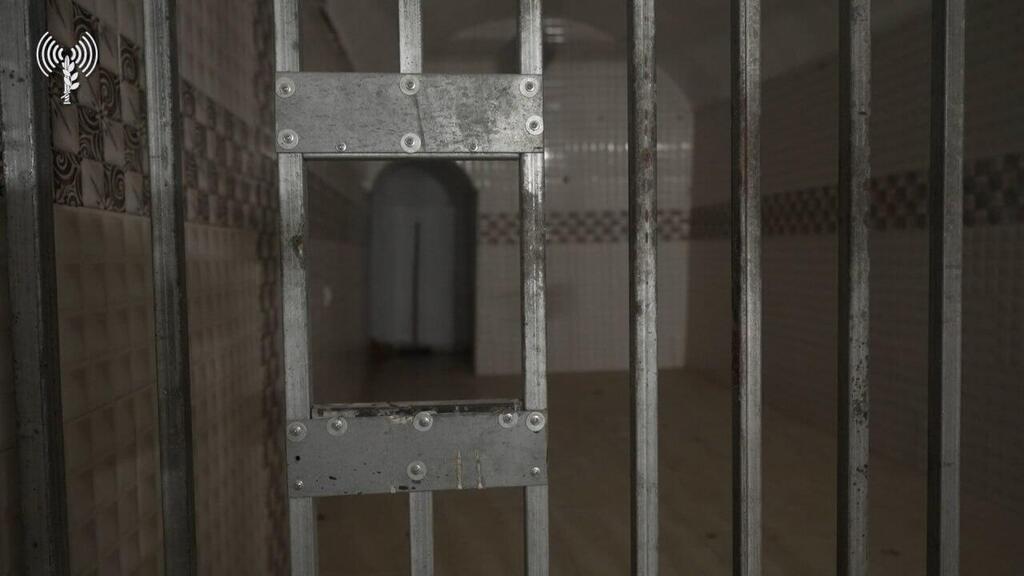

A cell in an underground under Khan Younis in which hostages have been held
(Photo: IDF)
“I wish decision-makers could walk in our shoes,” she added. “I wish they could feel what it means. Our loved ones are there. If it were their loved ones, they’d be talking differently; I’m sure of it. If there’s a way to save someone who is still down there in those tunnels, without food, air or water, and in the worst physical and mental condition, then they must do everything possible. Don’t forget why we went to war and why we’re still at war.”
Dedicated heroes amid the high costs of war
Since October 7, the war has claimed the lives of 771 Israeli soldiers, including 360 who fell in Gaza. The ground offensive across the Gaza Strip has also left 2,368 soldiers wounded, with 452 seriously injured, 726 sustaining moderate injuries and 1,190 with minor injuries.
"He talked about the fact that there was a real price to be paid within this war but that they were willing to pay it," said Marcy and Howard Oster, the parents of Sergeant First Class (res.) Amichai Yisrael Yehoshua Oster who was killed on January 1 by an explosive device on the outskirts of the Daraj Tuffah sector in northern Gaza. When the war broke out, he had been in the United States but quickly returned to Israel. "He felt that he needed to be fighting for his country. He felt he needed to be part of it."
Amichai insisted on returning to Israel to join the fight and fell in battle
(Video: Mickey Schmidt)
His mother shared a poignant memory: "A couple of weeks before he fell, we had this conversation, where I told him that I felt terrible that he was fighting this war, that we brought him here. We knew he would have to serve in the army. And he looked at me and said, 'what makes you think that if we hadn't made Aliyah, I wouldn't be here fighting anyway?' And that has given me a lot of comfort over the last few months."
Gideon Abbas, the brother of Maj. Jamal Abbas who fell on November 18 in Sheikh Ajlin in northern Gaza, described his brother as one of the first forces to enter the hostile territory. “This was always his way,” he said.
“Even as a child during the Second Lebanon War, he wouldn’t go to the shelter. He’d say, ‘If everyone is fighting, we’re with them.’ The longing for him, the pain—it’s indescribable. You think life goes on, but the emptiness remains the same, and you try to build around it, which isn’t easy.”
Gideon noted that, on October 7, Jamal “rushed forward, feeling that this was his moment.” He added that he believes the bravery of soldiers like his brother deserves more recognition in Israeli society.
“People did things you only see in movies. Look at Yom Kippur War; what we accomplished was remarkable, yet all people remember is the failure. We want them to remember the courage, to know there’s a generation here that hasn’t forgotten the essence of Israel, the reason it was established, and ran into the fire for the hope that we could live better.”
Abbas also referenced the Nation-State Law, which alienated many of Israel's minorities, including the Druze community, and a recent tense meeting with Interior Minister Moshe Arbel, saying, “We’re not mercenaries, here just to die for the state. That’s not how it works. There’s talk of creating separate legislation for the Druze community, and my grandfather was outraged by this. Twelve of our best Druze sons have fallen in this war alone, leaving aside the 432 who’ve fallen over the years—and even more if we count before Israel’s establishment. The feeling of second-class status isn’t felt in the streets; Israeli society embraces us, and everyone shares the burden. But that’s not how the state treats us. We want equality for the Druze, without being separated from the Jewish people.”
Get the Ynetnews app on your smartphone:



